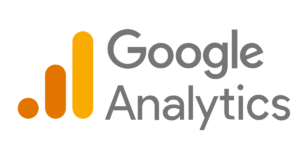Understanding user activity is crucial for optimizing web applications, personalizing user experiences, and making informed business decisions. Tracking user behavior on your web application reveals insights into user preferences, pain points, and engagement patterns. Whether it’s understanding where users spend the most time, identifying the features they ignore, or improving your application’s conversion rate, user activity tracking can provide invaluable data. This article explores how to implement user activity tracking and introduces some powerful tools—including our own, PrettyInsights—that help you unlock actionable insights into user behavior.
Why Track User Activity?
Tracking user activity goes beyond simply counting visitors; it’s about analyzing how users interact with your web application. User activity data can answer questions like:
- Which features are most popular?
- Where do users encounter issues or get confused?
- What are the common paths users take before completing (or abandoning) a goal?
Answering these questions is essential for a few reasons:
- Improving User Experience: By understanding user interactions, you can streamline workflows and enhance usability.
- Personalizing Content and Offers: When you know your users’ behavior, you can tailor your content or promotions to be more relevant to them.
- Increasing Retention and Conversion Rates: User activity tracking helps you identify areas to enhance, optimize onboarding, and build features that resonate with your audience.
Methods for Tracking User Activity
There are several methods to track user activity in web applications, each varying in complexity and the depth of data collected. Here’s an overview of some common tracking methods:
1. Event Tracking
Event tracking involves monitoring specific actions a user takes, such as clicking a button, scrolling, or submitting a form. This is often done by setting up event listeners in your app’s code. Events are typically recorded with timestamps, user identifiers, and contextual details, allowing you to analyze activity patterns or troubleshoot issues. You can manually log these events in your backend or rely on a third-party tool that captures and organizes event data automatically.
2. Page View Tracking
Page view tracking monitors each time a user loads or navigates to a new page within your web application. This is useful for single-page applications where a user may navigate across different sections without reloading the page. By capturing page views, you can analyze the most and least visited sections of your application. Google Analytics and PrettyInsights both offer page view tracking capabilities, providing insight into user flows and helping you identify high-traffic areas in your app.
3. Session Tracking
Session tracking groups a user’s interactions into individual sessions, which typically start when a user enters the app and end after a period of inactivity. Session data offers a more comprehensive view of a user’s journey through your app, showing the sequence of actions and providing context for each event. Sessions are invaluable for identifying where users get stuck or drop off, allowing you to make targeted improvements.
4. Heatmaps and Click Maps
Heatmaps provide a visual representation of where users are clicking, scrolling, or focusing on a page. By analyzing heatmaps, you can identify which parts of a page draw the most attention and which are ignored. Click maps, on the other hand, show exactly where users click, helping you understand navigation patterns and potential design improvements.
Tools for Tracking User Activity
To implement user activity tracking, you can build custom tracking solutions or use a variety of tools that simplify the process. Here’s a look at some of the best tools, including our own, PrettyInsights, for monitoring user activity.
1. PrettyInsights
PrettyInsights is a powerful web analytics tool designed to provide deep insights into user behavior. With PrettyInsights, you can track detailed user activity, including page views, event tracking, and custom conversions. The tool’s intuitive dashboard displays essential metrics like time on page, engagement rates, and session duration, which allow you to understand how users interact with specific features in real-time.
One standout feature of PrettyInsights is its ability to segment users based on behavior, demographics, or traffic source, making it easy to target and optimize experiences for different user groups. Additionally, PrettyInsights provides heatmap functionality, allowing you to visualize clicks and engagement across various parts of your app, which is ideal for assessing UX and refining user journeys.
If you want a simple web tracking tool for your visitors, check our pricing page and get to track your anonymous visitors, with a live view dashboard and reports.
2. Google Analytics
Google Analytics is a widely used and free analytics tool that provides insights into user behavior on web applications. With Google Analytics, you can track page views, user demographics, event tracking, and session data. It integrates seamlessly with most web applications, offering detailed reports and an extensive range of metrics. However, Google Analytics does not provide much in-app behavior analysis beyond basic page views and events, making it more suitable for tracking high-level trends than granular in-app interactions.
3. Mixpanel
Mixpanel is a specialized tool for tracking user behavior within web and mobile applications. It enables event-based tracking, funnel analysis, and user segmentation. Mixpanel’s focus on events makes it an excellent choice for applications where specific user actions, like video plays or form submissions, are crucial. The tool also offers advanced analytics features, such as cohort analysis and retention tracking, to help you measure the long-term success of your application.
4. Hotjar
Hotjar combines heatmaps, session recordings, and survey tools to give you an in-depth understanding of user behavior. Its heatmaps and session recordings are particularly useful for understanding on-page behavior and identifying areas where users experience difficulties. Hotjar also allows you to gather feedback directly from users through surveys and polls, giving you a qualitative perspective to complement the quantitative data collected.
Implementing User Activity Tracking
To implement user activity tracking in your web application, follow these steps:
- Define Your Goals: Begin by outlining the objectives of your tracking efforts. Are you focusing on user onboarding, improving feature engagement, or boosting conversion rates? Clear goals will guide your tracking strategy and the tools you choose.
- Choose Your Tracking Methods and Tools: Based on your goals, decide which tracking methods (events, page views, sessions) are most relevant. Select a tool, such as PrettyInsights, that provides the necessary features and integrations with your existing tech stack.
- Set Up Event Tracking: For tracking user actions like clicks and form submissions, configure event tracking by adding code snippets or using the tracking tools’ event management options. Many tools offer a no-code event setup, which makes it easy to configure tracking without extensive development work.
- Analyze and Iterate: Review the collected data regularly and identify trends or anomalies. If users consistently drop off at a certain point, investigate and implement adjustments. Tracking is an iterative process, so be prepared to refine and adapt your approach based on insights from the data.
Conclusion
Tracking user activity in web applications is essential for understanding how users interact with your product, identifying areas for improvement, and personalizing user experiences. With tools like PrettyInsights, Google Analytics, Mixpanel, and Hotjar, you have powerful options to track, analyze, and optimize user activity. By implementing a structured approach to tracking and continuously refining based on user data, you can enhance your web application’s user experience and, ultimately, achieve better engagement and retention.




